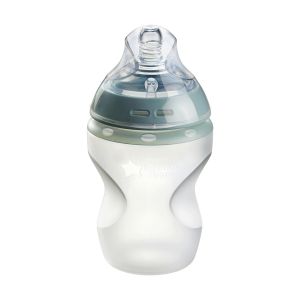
This is a demo store. No orders will be fulfilled.
Subscription orders can be cancelled at anytime. Standard delivery will be charged on each subscription order. Find out more about subscriptions.
They’re easy and fuss free
Your products are automatically sent to you
You save when you sign up for a subscription
You can cancel at any time
The truth is, having a blocked milk duct can be painful and uncomfortable. If a clogged duct isn't unblocked promptly, it could develop into localised swelling and inflammation of the breast, also known as mastitis.
If you're breastfeeding and concerned about blocked milk ducts, try not to worry. There're a few ways to relieve them! This guide is here to help you understand what causes clogged milk ducts and to help you know how to cure them.
Narrow tubes called mammary ducts carry breast milk from the segmented glands (lobules) in the breasts to the nipple. If one of the glands isn't properly drained of breast milk during a feed, the milk can't flow through easily, and the duct can become blocked.
Blocked ducts can be caused by several factors, including if:
Some common signs and symptoms of a blocked breast milk duct to look out for include:
A clogged duct is unlikely to fix itself without intervention. Luckily, there are a few techniques you can try to unclog milk ducts and relieve the pain they cause. These include:
If you're struggling to unclog a blocked duct, don't be tempted to try and pop it. This can lead to a higher risk of infection.
If the blockage hasn't cleared after a day or two, or you notice that your symptoms are getting worse, there may be a risk of developing mastitis, so don't hesitate to contact your doctor.
The symptoms of mastitis are:
Plugged milk ducts are very common, but if you're just beginning your breastfeeding journey, these tips on how to help prevent them from becoming clogged in the first place may come in handy. To reduce the risk try to:
To wrap up, let's get some answers to some of the most common questions that parents ask about blocked ducts when breastfeeding.
Yes, pumping more often, alongside maintaining your usual breastfeeding schedule, can help relieve clogged ducts. Expressing breast milk encourages it to flow, which can in turn help remove the blockage.
Yes, ibuprofen or paracetamol are safe to take while breastfeeding. That said, it's always a good idea to check with your GP or midwife before taking any medication while breastfeeding. Do note, people who are breastfeeding shouldn't take aspirin.
You can tell that a blocked milk duct is cleared if you can no longer feel a lump and your breast milk is flowing comfortably. You may also see extra thick breast milk come out while you're pumping or hand-expressing.
The blockage in your milk duct should clear after a day or two of treatment, but if you notice that your symptoms are getting worse and the clog isn't clearing, there may be a risk of developing mastitis. Don't hesitate to seek medical support if you suspect you have mastitis.